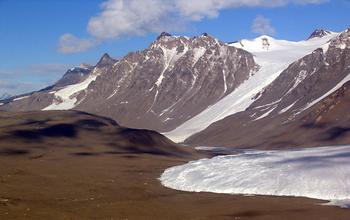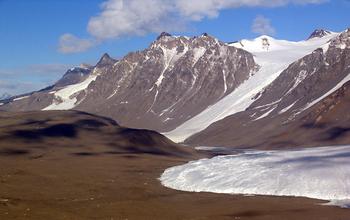
Credit: David Haney
Researchers funded by the National Science Foundation (NSF) have publicly released high-resolution maps of Antarctica's McMurdo Dry Valleys, a globally unique polar desert.
The high-resolution maps cover 3,564 square kilometers of the McMurdo Dry Valleys and allow researchers to compare present-day conditions with lower-resolution LIDAR surveys conducted almost 13 years ago.
Scientists from Portland State University led the new research project, which mapped the area using more sophisticated LIDAR, a remote-sensing method that uses laser beam pulses to measure the distance from the detector to the Earth's surface.
Two NSF-funded facilities, the Open Topography Facility and the Polar Geospatial Center, made the LIDAR data publicly available. A paper about the work was published in the journal Earth System Science Data.
The data, collected by aerial survey missions flown in the Southern Hemisphere in the summer of 2014-2015, provide detailed topography of the perpetually ice-free region, where surprising landscape changes, such as rapid erosion along some streams, have been observed in recent years.
The freely available datasets will allow scientists to get a handle on how widespread and how significant changes to the frozen landscape might be in this ecologically sensitive region.
The National Center for Airborne Laser Mapping and the Portland State University team carried out the mapping during an eight-week field season, beginning in December 2015. They flew instruments aboard a Twin Otter aircraft operated by Kenn Borek Air, Ltd., under contract to NSF.
Features of the McMurdo Dry Valleys are interesting to a wide range of scientists, from biologists to geologists to glaciologists. For example, the Dry Valleys are one of the few places on the massive continent — the size of the U.S. and Mexico combined — where bedrock is exposed, allowing geologists to reconstruct the continent's geological history from samples.
The region is home to one of NSF's Long-Term Ecological Research (LTER) sites, the McMurdo Dry Valleys LTER. Researchers at the site study the extremely cold and dry habitat, which is dominated by microbial life in the soil and in unique ecosystems under at least one of its glaciers and in several of its highly salty lakes.
The cold, dark environment of the McMurdo Dry Valleys is the ecosystem on Earth that most closely resembles the surface of Mars.
Evidence of past glacial advance and retreat is also more easily observed in the Dry Valleys, providing a window into the past behavior of the vast Antarctic ice sheets and their influence on global sea levels.
###
Media Contact
Peter West
[email protected]
@NSF
http://www.nsf.gov






